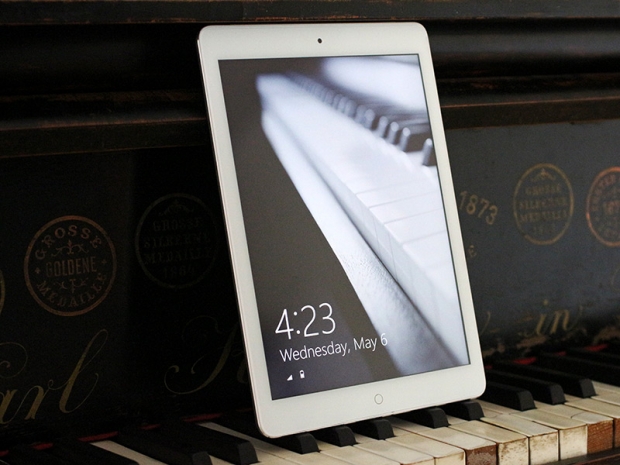Index
Review: Bay Trail, 3G, Android and Windows
How about some Candy Crush after a few hours of messing about in Excel? How about using Word with seamless SkyDrive integration, then switching to Android to read a book or two?
This appears to be the idea behind dual-boot tablets – they offer Windows and Android on a budget, productivity and entertainment in one go. Both platforms have something going for them. Windows is still unmatched in terms of productivity, but Redmond’s app store is very limited. Android has a vast app store, but falls short in productivity. It sounds like a match made in heaven, but it’s not as simple as it sounds.
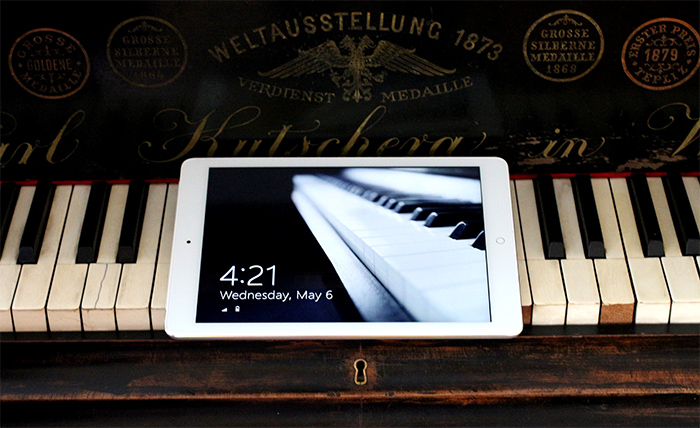
Today we will be reviewing the dual-boot Onda V919 Air tablet, based on an Intel Bay Trail processor, with 3G connectivity in tow. The chip of choice is the Atom Z3736F, one of the fastest Bay Trail incarnations. The chip is clocked at 1.33GHz, but goes up to 2.16GHz in burst mode. The processor has a scenario design power (SDP) of 2.2W and supports DDR3L-RS 1333 memory, but it’s limited to one channel and 2GB of RAM.
The Onda V919 Air ships with 2GB of RAM, 32GB or 64GB of eMMC storage, a 9.7-inch 2048x1536 IPS display and 3G connectivity. The device features an aluminium build and all in all, it sounds like a nice deal for $209.
Design and Build Quality
As you can see, the Onda V919 Air is an iPad clone, it features the same form factor and screen resolution.

Measuring 240 x 170 x 8mm (9.43 x 6.68 x 0.31 inches), the tablet is a hair thicker than the iPad Air, and tips the scales at 496g (1.1lbs).
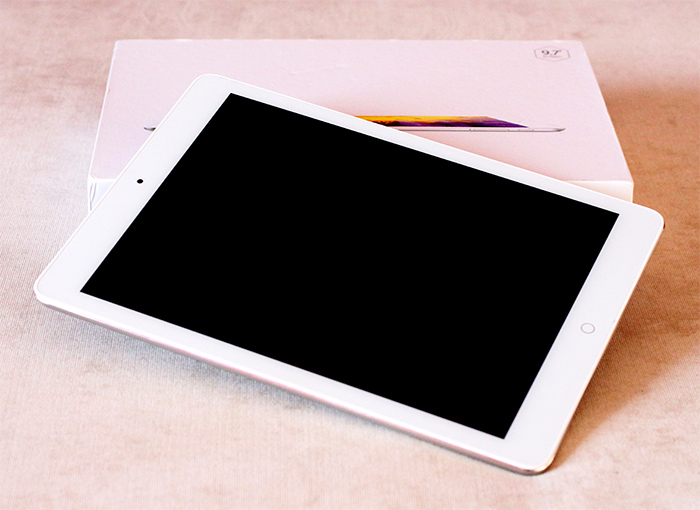
Like the iPad, the Onda features an aluminium body, but there are a few differences. Obviously you don’t get the same level of precision craftsmanship, which is especially evident on the milled speaker grilles.
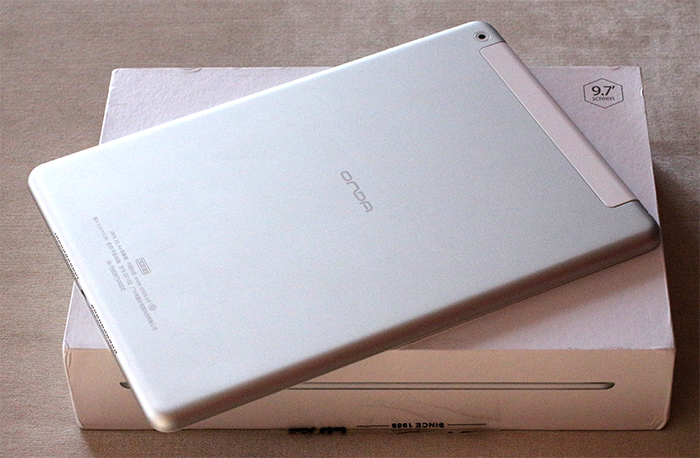
At the top you’ll find another item you won’t see on an iPad – a removable plastic flap which houses two antennas.
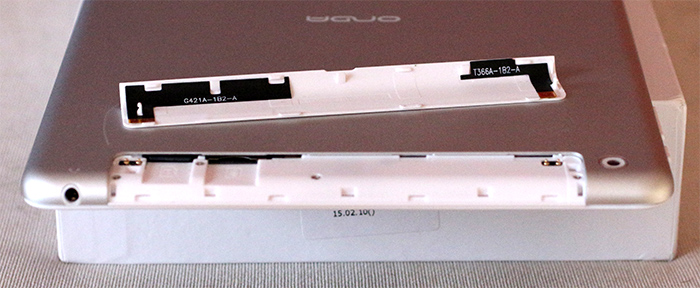
It offers easy access to the microSD and SIM slots. The Micro USB connector is at the bottom, while the 3.5mm audio plug is at the top.
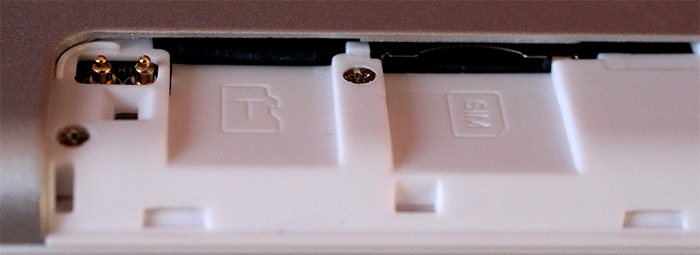
The right side houses the volume rocker, reset button and power button. The rocker and power button are crafted from one piece of white plastic. There’s nothing wrong with using plastic for such components on a device like this, but the buttons feel cheap, in contrast to the thick aluminium body.
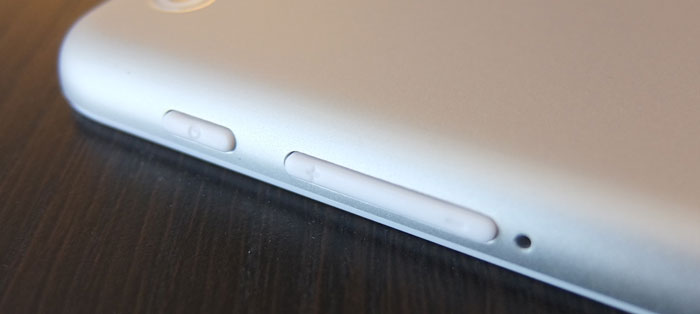
Speaking of the aluminium shell, the finish is quite good and the device feels very robust. There’s no flex, no squeaks or creaks. Our only complaint involves the milled speaker grilles, which are not exactly symmetrical. It’s not a huge deal, provided you don’t suffer from OCD, but it clearly shows the Onda was built to a budget.
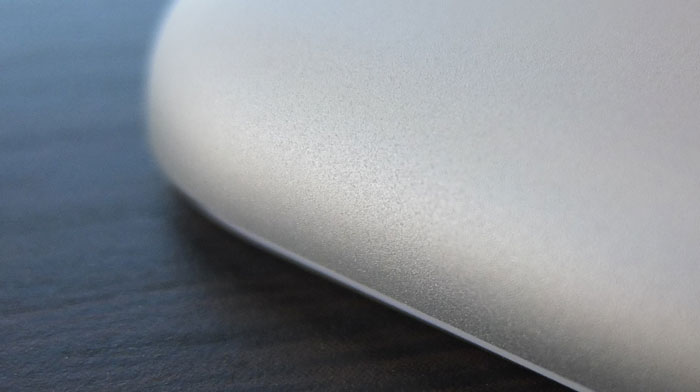
The 9.7-inch screen comes with a preinstalled screen protector and we were unable to find out what sort of glass Onda used. The screen protector suggests we are not looking at a top notch solution like Gorilla Glass, but this is understandable in this price range. The capacitive home button houses a blue LED.

Overall, the Onda feels quite good compared to most cheap Android and Windows tablets we came across. The iPad-esque design might be a turnoff for some people, but the 9.7-inch 4:3 form factor has been around for years and we can’t blame Onda for using it. Even google switched to 4:3 in the 9-inch Nexus 9 tablet, and there is really not much one can do to differentiate tablets in this form factor.
Onda V919 Air Specs and Performance
The Onda V919 Air packs some nice hardware, including the Atom Z3736F, a decent screen, and a plenty of storage. However, since this is a dual-boot device, the storage is divided between the two operating systems, which is worth keeping in mind.
The icing on the cake is 3G connectivity, which may come in very handy for some small businesses with an appetite for cheap, connected devices. Obviously, 3G connectivity is not global and won’t work in many regions, so please check the spec before pulling the trigger.
Onda V919 Air spec sheet:
- SoC: Intel Atom Atom Z3736F, 22nm
- CPU: Four 64-bit x86 cores clocked at 1.33GHz to 2.16GHz
- GPU: 7th generation Intel HD Graphics, clocked up to 646MHz
- Storage: 32GB/64GB internal eMMC (Hynix), micro SD slot up to 64GB
- OS: Windows 8.1, Android 4.4 (dual-boot)
- Rear camera: 5-megapixel sensor
- Front facing camera: 2-megapixel sensor
- Battery: 7000mAh lithium ion
- Dimensions: 240 x 170 x 8mm (9.43 x 6.68 x 0.31in)
- Weight: 496g (1.1lbs)
- Connectivity: 802.11b/g/n WiFi, Bluetooth, 3G (GSM+WCDMA)
- Sensors: 3-axis Freescale accelerometer
- Network support: GSM+WCDMA (GSM 850/900/1800/1900MHz, WCDMA 2100MHz)
A quick glance at the spec sheet reveals where Onda decided to save money. The sensor suite is practically non-existent, which really isn’t much of a problem for a tablet (few people will need a GPS or proximity sensor on a tablet). However, there is no light sensor, and with a power hungry high-resolution display it would come in handy.
3G is limited to the 2100MHz band, which is the most popular band out there, but it’s not available in North America and much of Latin America. However, it should work just fine on many 3G networks in Europe, Asia, Africa and Oceania.
Like we said, the dual-boot approach has some major implications on storage. On the 32GB model you get 7GB of storage for Android, and 16GB for Windows. This obviously doesn’t add up to 32GB, but keep in mind that Windows needs a recovery partition. The good news is that you can use a microSD card for expansion, or get the 64GB version instead.
In terms of performance, the Onda V919 Air is just another Bay Trail tablet, so there are no surprises. However, how do we go about testing the same hardware under two operating systems?
In Android, the Onda is roughly on a par with mid-range phones. Bear in mind that the tablet ships with Android 4.4, so it can’t take advantage of the CPUs 64-bit capabilities. Also, the 2048x1536 display needs more GPU muscle than a 1280x800 or 1920x1080 display (both are commonly used on Windows tablets nowadays).
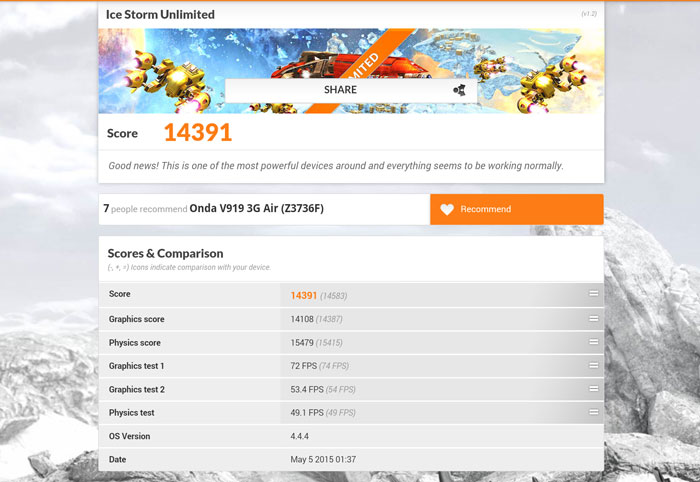
In good old Quadrant, the Onda scored an unimpressive 14559 points. However, in 3D Mark Ice Storm Unlimited it ended up with 14391, which is not bad. It’s still not as good as the latest flagship phones, but it’s not bad either. Basemark OS II gave it 890, which is slightly better than the average mid-range phone. In AnTuTu, we got scores north of 33000.
We decided to run a couple of storage benchmarks in Windows. Since Bay Trail has been around for more than a year, there was really no point in running additional CPU tests. However, storage can be a problem on inexpensive Bay Trail devices, as vendors try to pinch pennies on every component. Luckily the Hynix eMMC drive offers good performance.
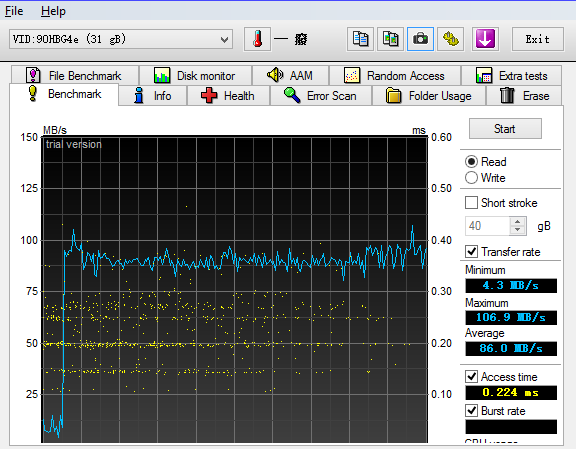
HD Tune and CrystalMark reported transfers speeds in excess of 100MB/s, and in some instances well over 150MB/s. This is more than enough for a Bay Trail system, as the CPU is more likely to be the bottleneck under load.
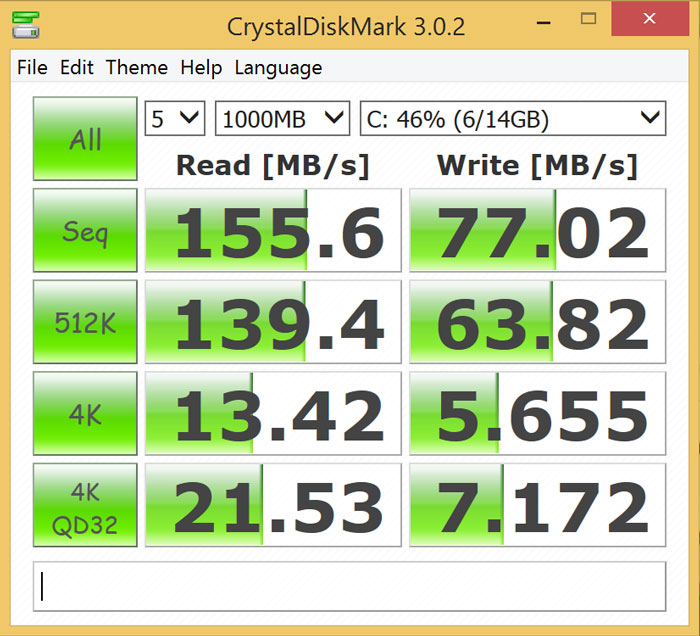
Windows feels a tad more responsive than Android, at least on this particular device. The UI is noticeably smoother and the user experience is better all around.
Display, Audio and Imaging
The Onda V919 Air features a decent 2048x1536 panel, which translates into about 264ppi on 9.7 inches. It’s an IPS panel, so the viewing angles are good. We’ve seen brighter displays, but considering the price, the panel is more than adequate. The high pixel density makes browsing and reading enjoyable. The colours are pretty good – not too vivid, but not washed out, either. Contrast is adequate, although the screen fails to impress in direct sunlight, but this is true of virtually any tablet.
Our biggest complaint is the lack of a light sensor, which means you have to adjust brightness manually. As soon as it gets dark, you’ll have to tweak the brightness level. The preinstalled screen protector also gives the panel a “plasticky” feeling, but it can be removed.
![]()
Overall, we enjoyed the panel. We didn’t have a chance to try out Windows in this particular resolution before, but the UI copes with 4:3 panels quite well.
The audio quality leaves much to be desired. The speaker is simply not loud enough, which is a disappointment – on the one hand you get a high resolution display on a budget, but if want to enjoy some hi-def video, the speaker simply won’t cut it. The really odd thing is that you can also use the tablet to make voice calls in an emergency, although it’s obviously not nearly as good at this as a regular phone.
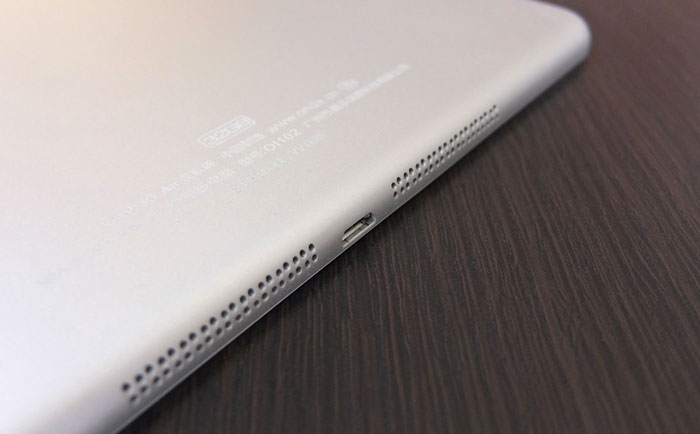
The Onda V919 Air sports a 5-megapixel camera at the back and a 2-megapixel sensor at the front. Since we are talking about a tablet, cameras are an afterthought. The rear camera can deliver decent results in daylight, but it’s obviously no substitute for smartphone cameras.
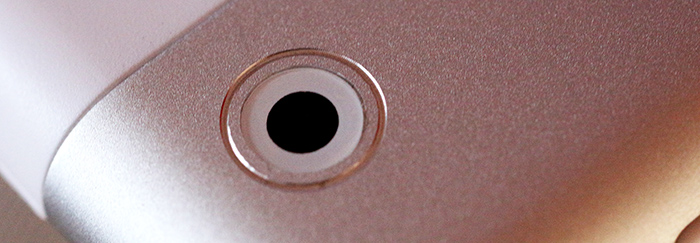
The front facing camera should be good enough for the occasional Skype session, but it struggles in low light.
OS, UI and Everyday Use
This is where it gets tricky, because the Onda comes with two operating systems – Android 4.4 and Windows 8.1. So where does it feel at home?
In Android mode, the tablet boots with a custom Onda launcher and quite a bit of bloatware. Luckily most of the bloatware can be removed and the launcher, which isn’t too bad in its own right, can be easily replaced.
Our biggest problem with Android on this device has nothing to do with the device itself. Few Android apps are designed with big 2048x1536 displays in mind. This isn’t a problem with Chrome, Gmail and core apps in general, but most third-party apps just aren’t optimised for high resolution 4:3 displays. Even basic stuff, such as finding an adequate wallpaper in the app store, can be a daunting task.
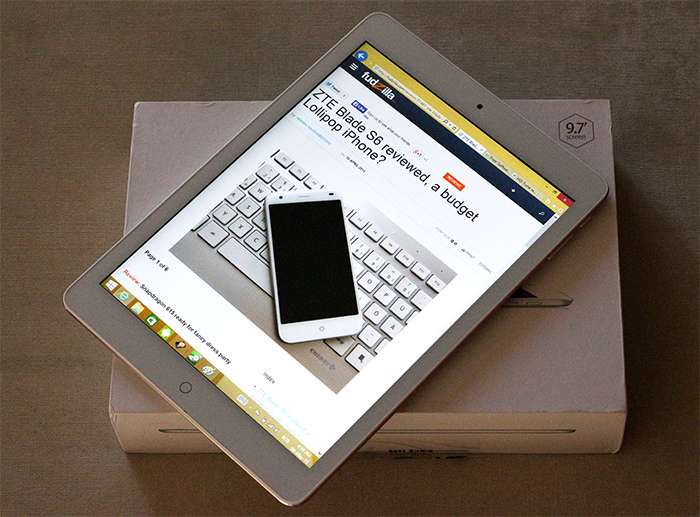
However, after trying Windows, we sort of forgot about Android and here is why. Although Android offers a lot more apps to choose from, Windows just works a tad better in most situations. The UI feels smoother, and even Internet Explorer delivers great performance. Power users will also appreciate the unmatched flexibility of Chrome or Firefox for desktop. Pairing a Windows tablet with a cheap Bluetooth keyboard can turn it into a productivity beast on the cheap, especially if it has a high-resolution panel.
Limited storage may be an issue, since we could access just 9GB in Windows. This is not too bad though, because few people will install a lot of bit, desktop applications on a tablet. You can install the basic stuff and get away with 9GB. You can also use the microSD slot for some cheap (but slow) storage. On the whole, we think the 64GB version makes more sense – it costs just a bit more than the 32GB model, but offers a lot more eMMC storage. It’s worth the extra investment, hands down.
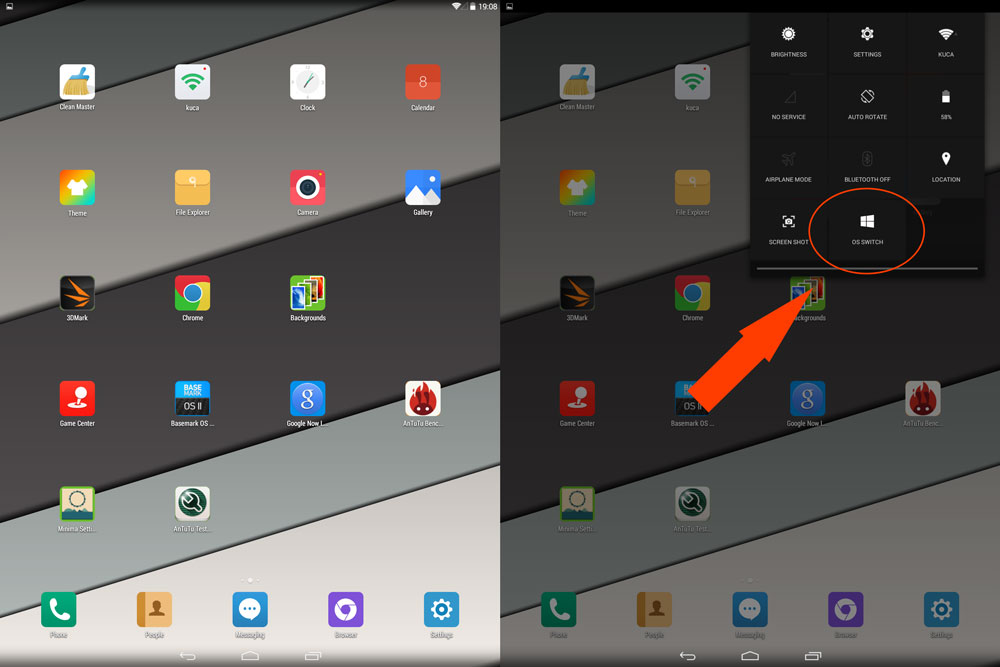
Switching between operating systems is straightforward. You can access the OS switch in the Android drop down settings menu, or via a Windows app in the taskbar. Either way, the tablet will simply reboot into the OS of choice and the whole process usually takes about 20 seconds, depending on how much stuff you’ve got open.
We like the idea of having two of the most popular operating systems in the world on a single device, but there are a few caveats. Storage is obviously the first thing to consider, as you’ll just need more storage out of the box. This is obviously the biggest problem, and so is using the same files in both systems. Either way, whether you choose the 32GB or 64GB model, our advice is to get a cheap microSD card to play around with and store media files. It will reduce clutter on the eMMC storage and help you manage your media libraries in a more elegant way.
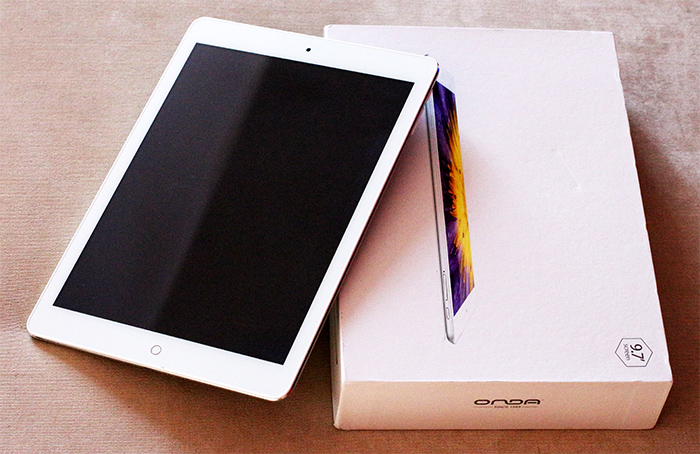
In terms of battery life, 7000mAh sounds like a fair amount of juice for an inexpensive tablet. However, bear in mind that the Onda V919 Air packs a QXGA display and a processor capable of hitting 2.1GHz. If you push it too hard, battery life will suffer. We experienced this during our brief benchmarking session. Driving a high resolution display and maxing out the SoC takes a big toll on battery life, as does using 3G, so during intense use we managed to drain about 20% of the battery in less than an hour. Of course, benchmarking is not a realistic use case by any stretch of the imagination. Normal use is another story, and you should have no trouble getting around 8 hours’ worth of browsing on a single charge, with average brightness settings.
Conclusion
The Onda V919 Air is a strange beast. Under the pedestrian iPad-clone shell, you’ll find some decent hardware, 3G connectivity and two operating systems. Its biggest selling point is the price, rather than any of the features. The 32GB unit sells for $208, while the 64GB model goes for $215, so it’s clearly a better deal. The sample was provided by GearBest, our principal purveyor of China-brand phones and gadgets.
Given the low price, there is really a lot to like about the dual-boot Onda, but the company also had to cut a few corners to end up with such a price. There’s no ambient light sensor, which is bad news for practicality and battery life. The plastic trim, especially the volume rocker and power button, feel cheap. There’s practically no fancy sensors on board, GPS is not on board, either.
However, as a complete package, the Onda V919 Air looks rather tempting, given the price. You still get one of the fastest Atoms on the market, aluminium build, 3G, and two operating systems. There are a few competing Chinese tablets with practically identical specs, although Onda tries a bit harder with the Atom Z3736F and a few other goodies. Either way, if you’re after a value tablet, the Onda V919 Air is definitely worth checking out.
Onda V919 Air Pros and Cons
Pros:
- Relatively good 2048x1536 panel
- Very competitive pricing
- 3G connectivity (check regional compatibility prior to making a purchase)
- Aluminium build
- Two operating systems for the price of one
Cons:
- Weak speaker
- No light sensor
- Preinstalled screen protector isn’t very useful
- Unoriginal design
- No Android 5.0

